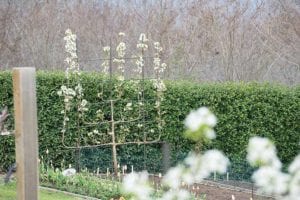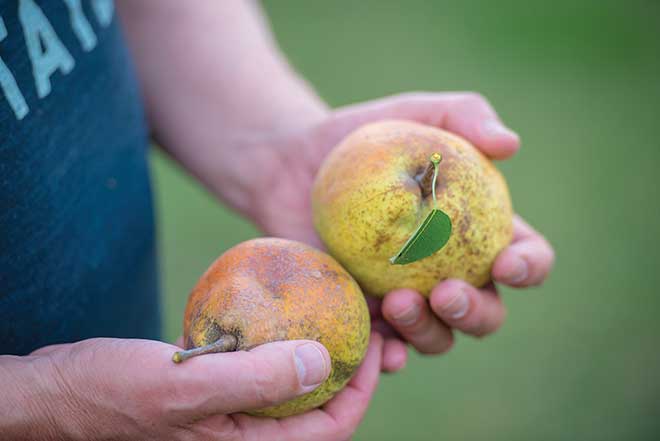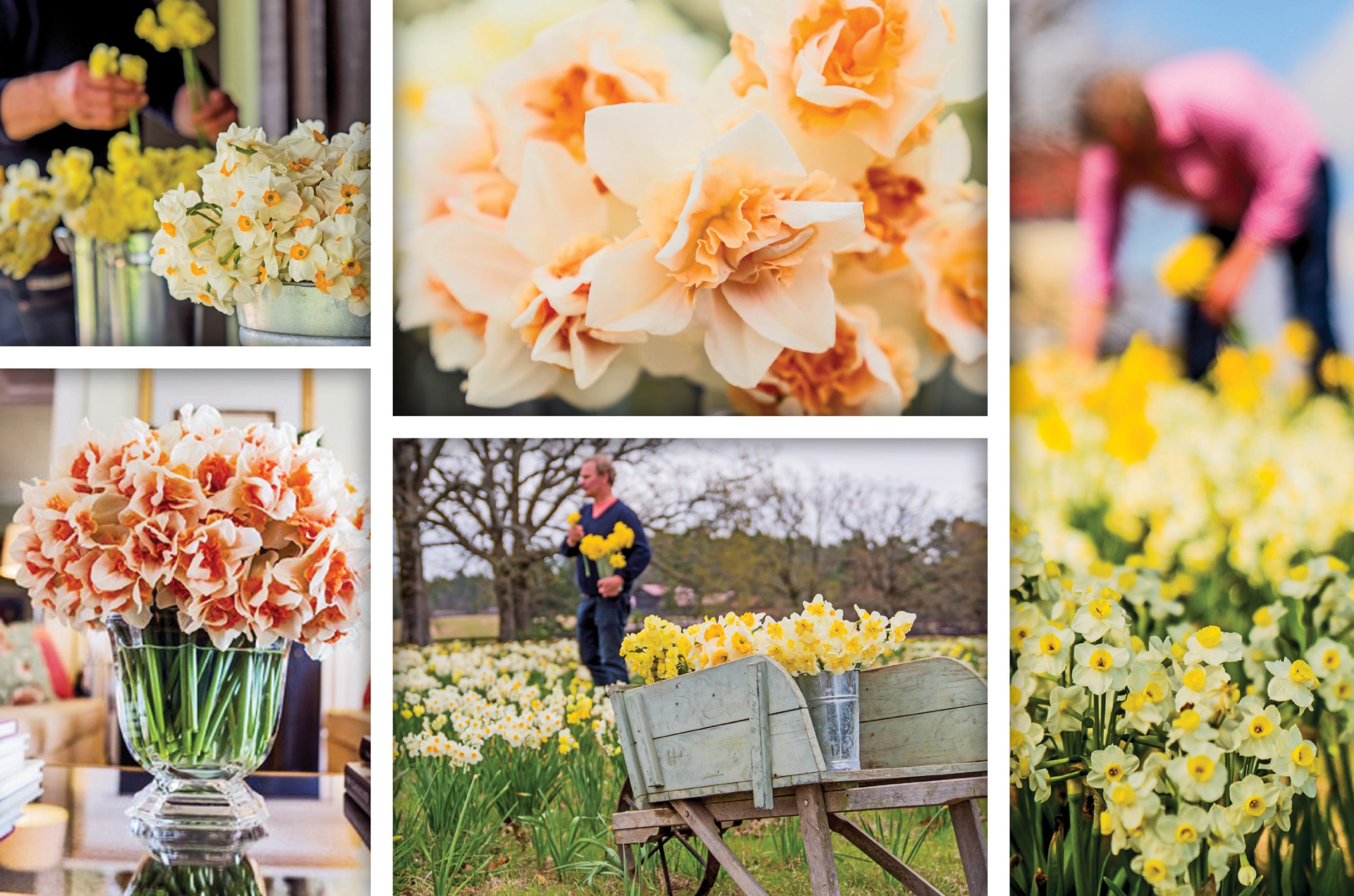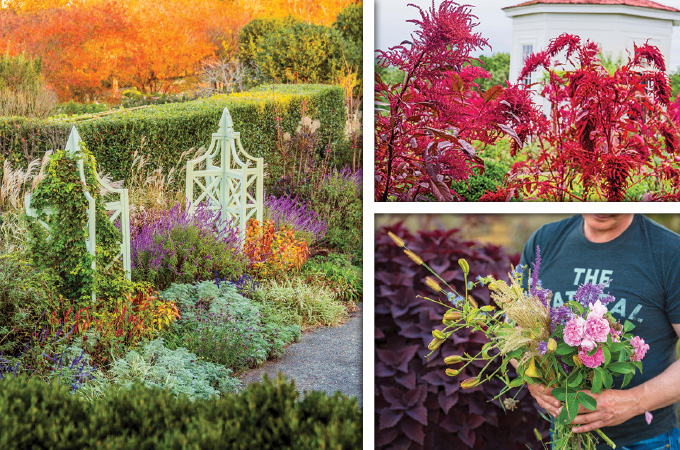Apples have always been more popular than pears, and I’ve often wondered, if Eve had eaten a pear instead of an apple, would that still be the case? Though the pear may not be associated with Christendom, it can be baked in tarts, preserved in jars or eaten raw paired with cheese.
 It all starts with the tree. I love to grow pears espalier style, an old school method where the tree is planted near a wall or structure and the limbs are trained to grow alongside a frame instead of straight up into the air. For our forefathers, this growing method meant fruit could be picked without a ladder, and the trees would take up less space. But even though I have access to ladders and room to grow, I simply enjoy the challenge. My go-to espalier design is the candelabra, where the branches grow out and then up. Espalier trees planted in this way can form a natural barrier or backdrop in your garden.
It all starts with the tree. I love to grow pears espalier style, an old school method where the tree is planted near a wall or structure and the limbs are trained to grow alongside a frame instead of straight up into the air. For our forefathers, this growing method meant fruit could be picked without a ladder, and the trees would take up less space. But even though I have access to ladders and room to grow, I simply enjoy the challenge. My go-to espalier design is the candelabra, where the branches grow out and then up. Espalier trees planted in this way can form a natural barrier or backdrop in your garden.
picking the right pear
Anyone who has bitten into a gritty Bosc, expecting the sweetness of an Anjou, will tell you not all pears are created equal. They vary in sweetness, flavor and juiciness, so the variety you choose for your recipe is important.
Green Bartlett: Typically used for canning, and generally not eaten raw, this variety has lots of juice, so it’s best for purees or baking.
Red Bartlett: Like green Bartlett but a little sweeter, so it’s eaten raw more often, but also great for preserves.
Red Anjou: Like the Green Anjou but sweeter and with a hint of spice instead of citrus. Opt for this when you want to add some color to your plate.
Green Anjou: The sweetest, most prevalent pear, it’s juicy, mellow and delightful raw, but also great for baking and roasting.
Comice: A juicy, sweet pear with silky flesh and a mellow flavor that is best raw.
Kieffer: My favorite variety to grow, it’s not as well known. Developed in the 1860s in Pennsylvania, Kieffers can thrive in northern and southern states. The trees produce beautiful blooms, and the fruit is great for canning and baking. My mother and aunts would finely shred Kieffers for pear honey and use them in preserves and pies.
Starkrimson: Its tell-tale red skin covers a soft and juicy fruit with floral notes that mellow when baked. Use to add unexpected color to tarts and other pear desserts.
Seckel: A small variety with soft insides that’s best eaten raw. These are so sweet, sometimes they’re called ‘sugar pears.’ Try pairing with cheese and wine.
Bosc: Tall and brownish with firm flesh, it’s best for baking and poaching.
Concorde: An all-purpose pear, it’s slightly more tart than the Anjou, but still good when raw. Great for baking and ideal for garnish because it doesn’t brown as quickly once cut.
Forelle: You will know this pear by its speckled skin, which resembles a trout. It has a firm, crisp flavor much like a green apple.
spinach, pear & cranberry salad
1/2 c extra-virgin olive oil
2 T balsamic vinegar
2 t whole-grain mustard
1 t sugar
1 t kosher or sea salt
Freshly ground pepper
1 c thinly sliced red onion, chilled in cold water
for 30 min
1/3 c sweetened dried cranberries
8 c lightly packed fresh baby spinach leaves,
stemmed if needed
2 firm but ripe pears (do not peel),
quartered lengthwise, cored and cut into
long, thin slices
2/3 c sliced almonds
To make the dressing:
▶ Combine the olive oil, balsamic vinegar, mustard, sugar, salt and a pinch of pepper in a mason jar.
▶ Secure the lid and shake vigorously until blended well.
▶ Put 2 tablespoons of dressing in a bowl and stir in the dried cranberries. Set aside to soften.
▶ Strain the red onions. Chilling the red onion slices in cold water makes them crisp and takes away the raw onion taste.
▶ Put the spinach, onions and sliced pears in a large bowl. Give the remaining dressing in the jar one last shake, and pour it over the salad.
▶ Add the cranberries and toss so the dressing fully coats the spinach. Serve immediately.
Makes about 4 servings.
P. Allen Smith is an author, conservationist, and TV host of Garden Home on PBS and Garden Style (check your local listings). He uses his Arkansas Home, Moss Mountain Farm, to promote the local food movement, organic gardening and the preservation of heritage poultry. For tours of the farm, visit pallensmith.com/tours.








